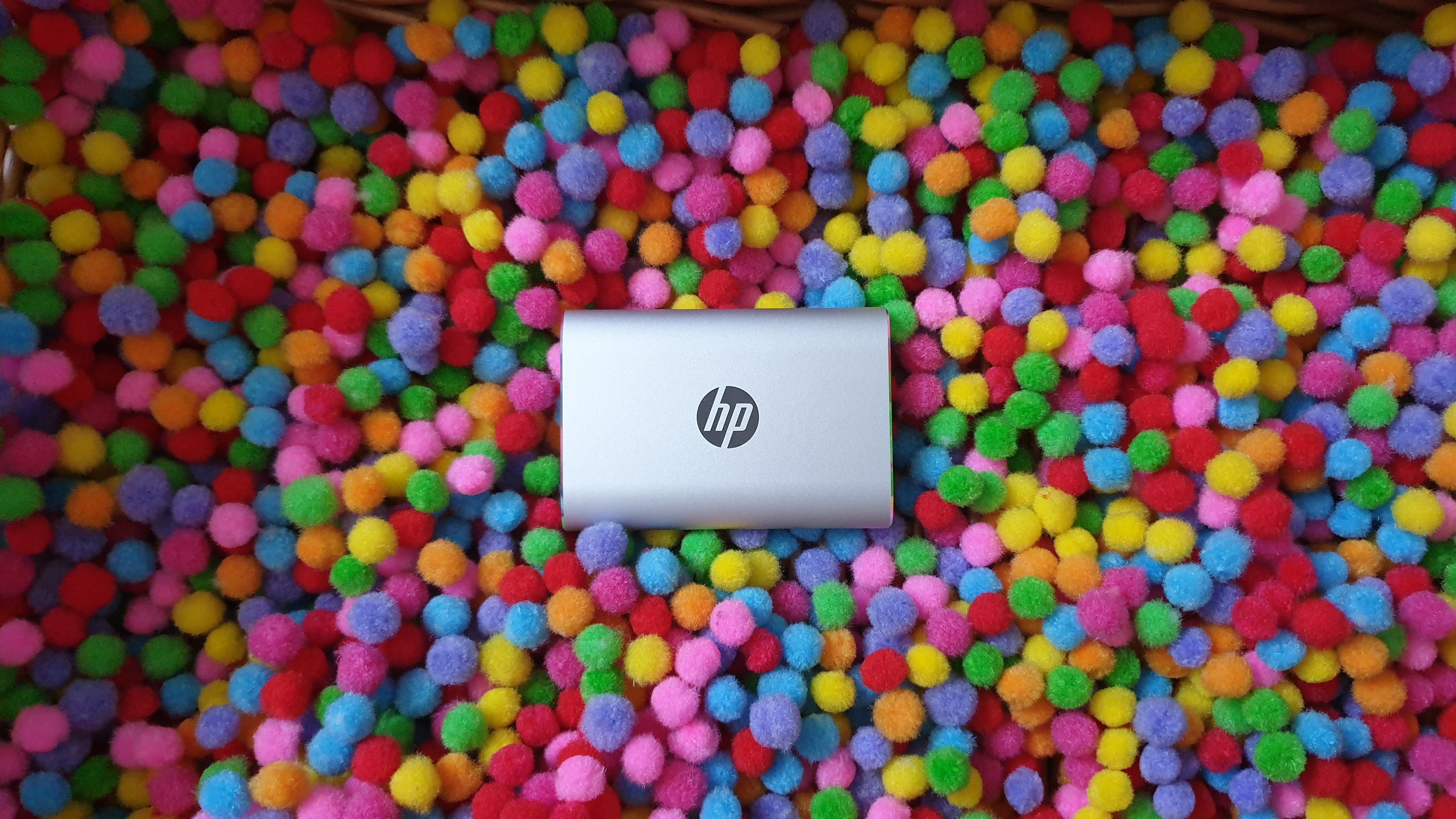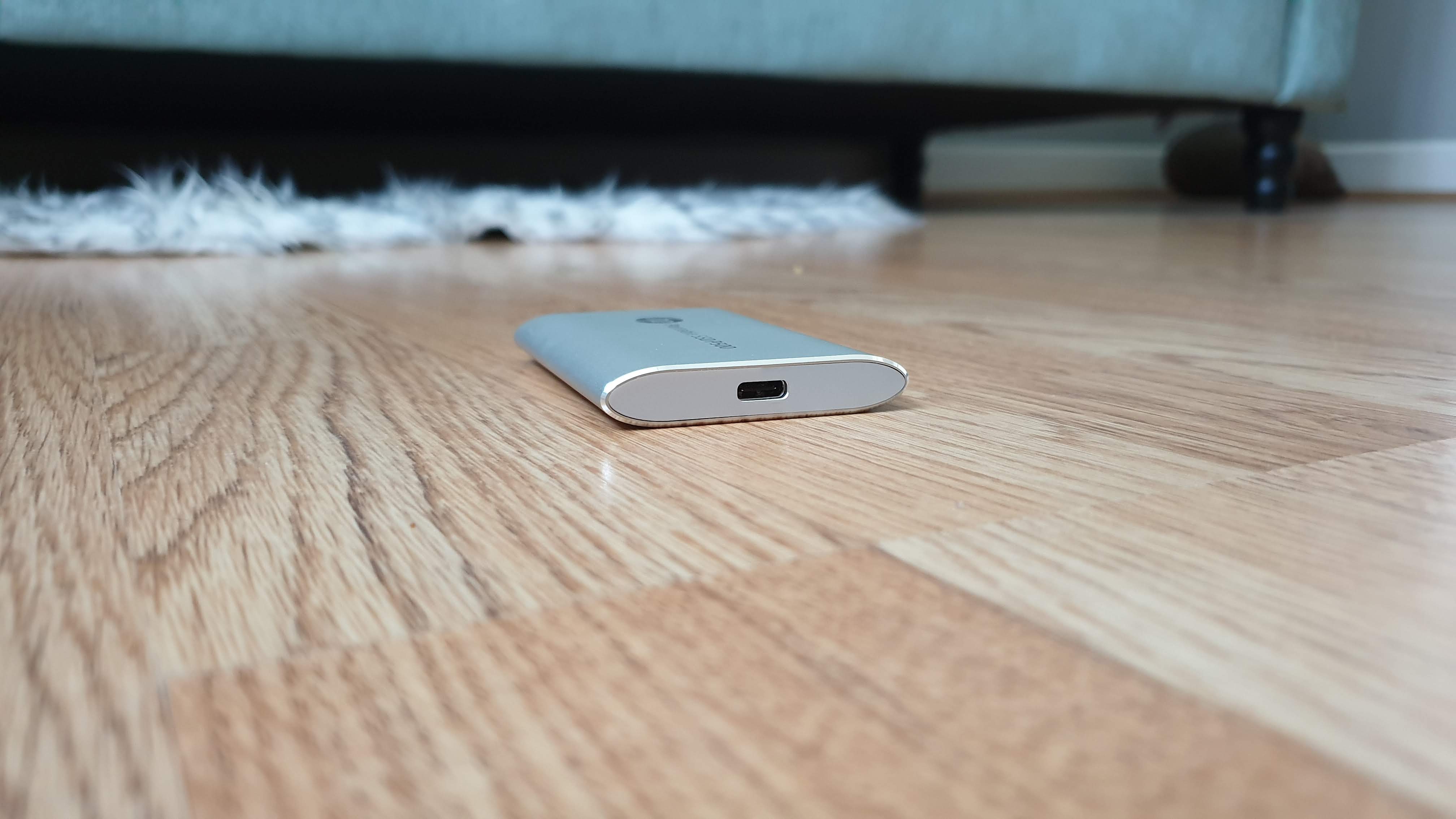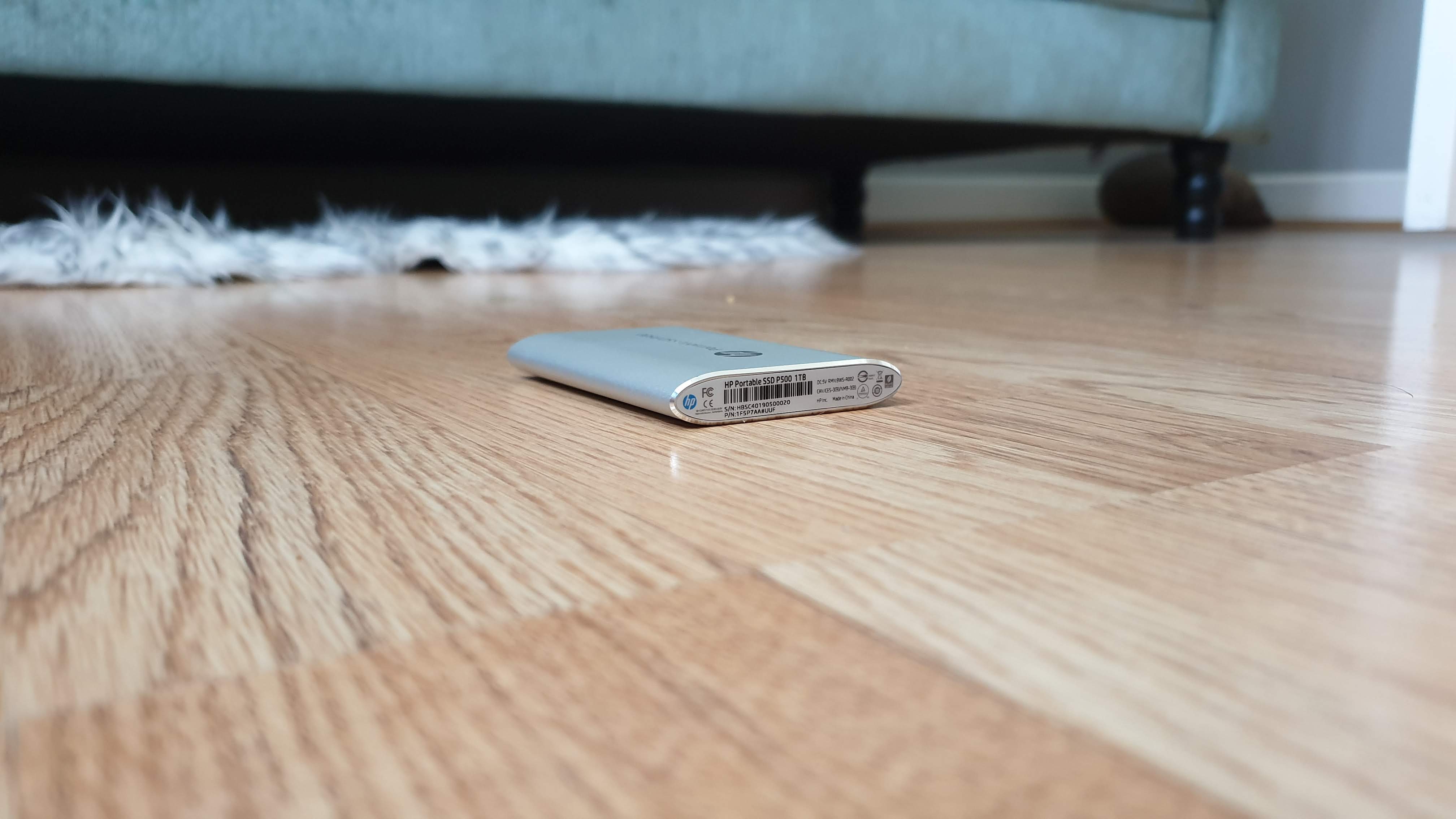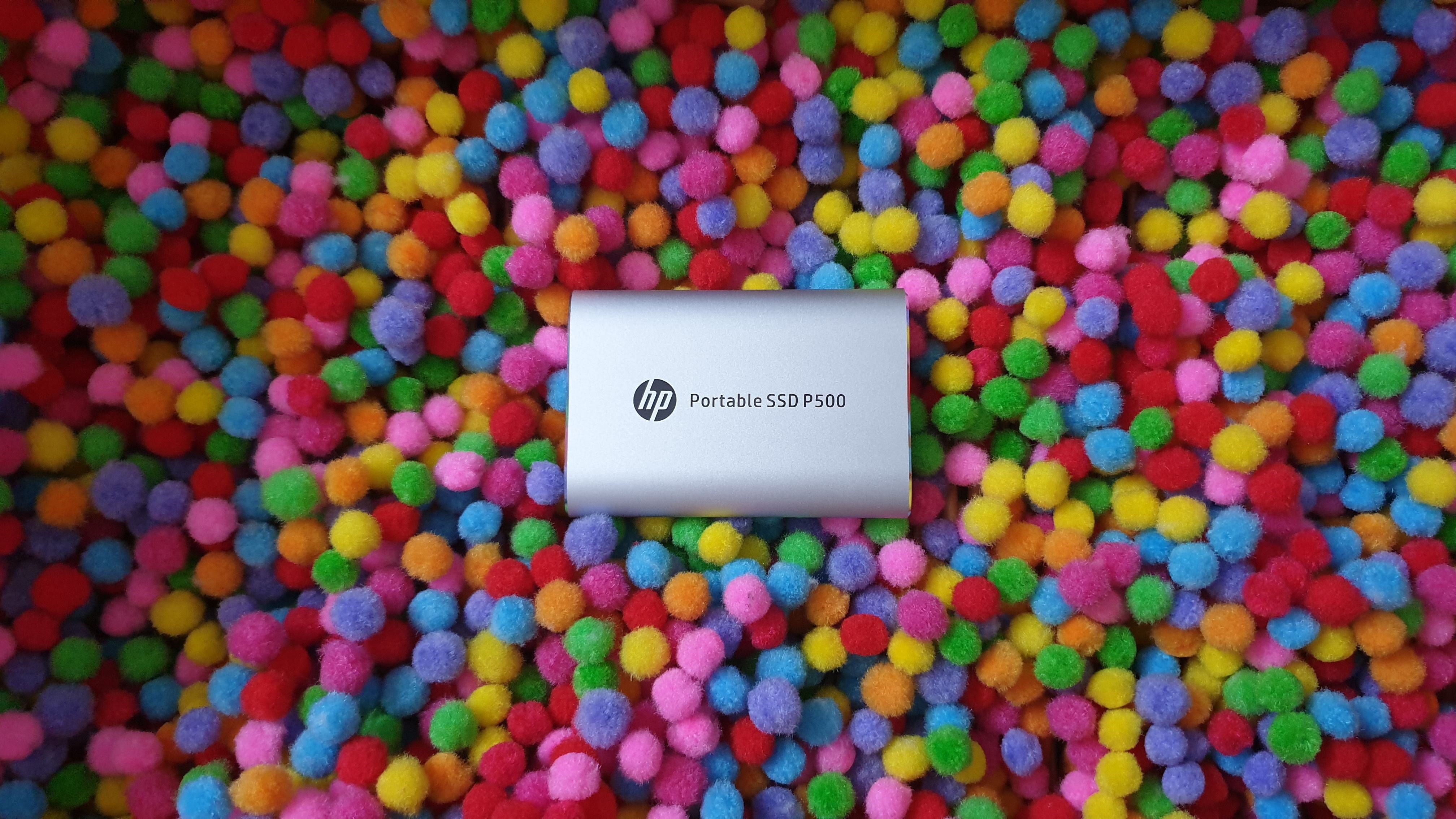TechRadar Verdict
You should not buy the HP Portable SSD P500 1TB; instead, if you’re after an external SSD, grab its faster, cheaper, more widely available bigger sibling, the P700, you will thank us afterwards.
Pros
- +
Great looks
- +
Three year warranty
- +
Tiny form factor
Cons
- -
Mediocre performance
- -
Patchy availability
- -
No status light/indicator
Why you can trust TechRadar
This review has been updated to reflet the fact that the 1TB version of the HP P500 is available from Newegg for $110 while the 500GB one costs $74.99. We've therefore updated the rating as well but kept the rest of the review unchanged as the performance is still an issue.
We received the HP Portable SSD P500 shortly after we reviewed the Portable Storage P700 which received our Editor’s Choice award and placed HP’s partner, BIWIN Storage, in very good company alongside the likes of Samsung and Adata.
The drive is not currently available in the US or in the UK; we have managed to track it down on Amazon India and HP Singapore where the 500GB version is on sale for around $100. The model under review today is the 1TB one, a silver model with the part number 1F5P7AA#UUF.

Design
The P500 is a very good looking portable SSD indeed; it reminded us of the Samsung Portable SSD T5 with its all-metal brushed silver shell and is available in blue and red colours as well.

It oozes quality and comes with a lonely Type-C connector (USB 3.1 Gen 2, so up to 10Gbps). It comes with a Type-C to Type-C cable plus a USB-A to USB-C adapter.

At only 79 x 54 x 10mm and weighing a mere 45g - thanks to its aluminum construction, it is also one of the smallest drives we’ve seen to date.
Performance
The drive - which is also available in 120GB and 250GB capacities - is compatible with Windows, Mac and Android. It has a maximum sequential read/write speed of 380MBps and 210MBps respectively which we found absurdly low for what looks like a premium SSD. Turns out the rated write speed for the 120GB model is even lower at 110MBps. Jaw dropping.
Sign up to the TechRadar Pro newsletter to get all the top news, opinion, features and guidance your business needs to succeed!
Here’s how the HP P500 1TB external SSD performed in our suite of benchmark tests:
CrystalDiskMark: 411MBps (read); 265MBps (write)
Atto: 397MBps (read, 256mb); 255MBps (write, 256mb)
AS SSD: 455MBps (seq read); 465MBps (seq write)
AJA: 384MBps (read); 248MBps (write)
Turns out though that they were not that far off. Our own numbers from AJA, CrystalDiskMark, ATTO and AS SSD support the fact that this is a poor drive when it comes to sheer performance. A 10GB file took about 45 seconds to transfer or a real life transfer speed of 224MBps.
Write speeds - and to a lesser extent read speeds - remain the biggest issue with this drive in whatever configuration we tested it. There’s no obvious answer as to why despite the fact that, well, the HP P700, part of the same stable, performs significantly better. We have reached out to Biwin Storage to obtain an explanation and will report back if we get one.
We tried the drive with a number of cables to eliminate any possible non-hardware related issues. What could have happened? Other than the interface, performance in a solid state drive is determined by the NAND chip it employs and the controller it uses. To make matters worse, we couldn’t determine any specs via our usual tool, CrystalDiskInfo.
We have tested at least one external SSD before that used QLC (Quad Level Cell), the cheaper, slower NAND chip, and that was the Adata SD600Q but even then, the performance wasn’t THAT bad. So there is a possibility that the SSD might also be down to the controller, in which case, there’s not much that can be done.
There’s another mind gobbling potentiality as well; this drive might be the first to feature PLC (Penta Layer Cell) with five bits stored per cell. Toshiba and Intel have both started production of this technology in the second half of 2019 and this would help explain the very low numbers we encountered in our benchmarks.
The competition
Let’s not beat around the bush, most external solid state drives currently available on the market are better value for money than the HP P500. Unless you want a drive that’s smaller, more expensive than the competition and you don’t really care about performance.
Let’s start with the obvious; the excellent HP P700 is one of the best portable SSDs right now with an excellent design, one nifty feature (the box) and performance to match. Oh and it is not as expensive as the P500 and still comes with a three year warranty. It is bigger than the P500 but that’s a compromise we will gladly embrace for what it offers.
The just reviewed Silicon Power PC60 is another example of a great value, yet very capable external solid state drive that, well, doesn’t come with any significant downside. It is just over half the price of the P700 at around $95 and delivers 1TB of storage at half the speed of HP’s flagship external SSD. No ostentatious looks, just good value.
A third alternative is the Adata SE800 which combines fast speed with an equally lengthy warranty and an IP68-rating which means that it is waterproof and dust-proof. At just under $148, it is also surprisingly affordable for what it offers. The only downside is that it has an integrated flap to ensure no water/dust ingress.
Final verdict
The P500 receives our lowest rating for any portable storage device because of two things: its general performance is very, very poor and its price - based solely on its Indian and Singaporean availability - is shockingly high compared to the competition.
We are rather disappointed given the high expectations we had following the review of the P700. Sure, the P500 is compact, well built and rather attractive but it doesn’t hide the ugly truth, that it should perform far better.
Ultimately, Biwin should have known better having been in the business for more than 20 years and unless they significantly drop the price of the P500, there’s no reason why you should buy it. Is it a one-off mistake or was the P700 a one-hit wonder? We’ll probably find out more with the next product.
- We've also highlighted the best portable SSD

Désiré has been musing and writing about technology during a career spanning four decades. He dabbled in website builders and web hosting when DHTML and frames were in vogue and started narrating about the impact of technology on society just before the start of the Y2K hysteria at the turn of the last millennium.
